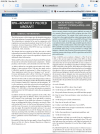With the right knowledge and situational awareness flights with a sub 250 gr drone can be done safely in controlled airspace or near airports. The reality is many do not have the knowledge to know the difference. So your lawyer friend might be right.
Here is what I recommend. These are recommendations and not regulations. So take them for what they are worth.
2.0 MICRO REMOTELY PILOTED
AIRCRAFT SYSTEMS (mRPAS)—LESS
THAN 250 g
Micro remotely piloted aircraft systems (mRPAS) are made up
of a remotely piloted aircraft (RPA) weighing less than 250 g
and its control station. The weight of the control station is not
factored in to the weight calculation when determining whether
an RPA is a micro RPA (< 250 g) or a small RPA (250 g to 25 kg).
However, the weight of any payload carried by the RPA, such
as an optional camera, a lens filter, pegs, propeller guards, stickers,
and lights, will be considered part of the total weight. The micro
RPA could thus reach 250 g or more and be made in the category
of small RPA from 250 g to 25 kg and have to comply with
Subpart 1 of PartIX of the Canadian Aviation Regulations(CARs),
requiring, among other things, an RPA registration and an RPA
pilot certification.
Pilots of mRPASs are not subject to Subpart 1 of Part IX of the
CARs, so they are not required to register their RPAs or obtain
a certificate to fly them. However, they must adhere to CAR900.06
and ensure they do not operate their RPA in such a reckless or
negligent manner as to endanger or be likely to endanger aviation
safety or the safety of any person. While there are no prescriptive
elements of the regulation that inform the pilot how to accomplish
this objective, there is an expectation that the pilot of an mRPA
should use good judgment, identify potential hazards, and take
all necessary steps to mitigate any risks associated with the
operation. This should include having an understanding of the
environment in which the RPA pilot is operating, with particular
attention paid to the possibility of aircraft or people being in the
same area.
As a rule of thumb:
(a) Maintain the mRPA in direct line of sight;
(b) Avoid flying your mRPA above 400 ft in the air;
(c) Keep a safe distance between your mRPA and other people;
(d) Stay far away from aerodromes, water aerodromes, and
heliports;
(e) Avoid flying near critical infrastructure;
(f) Stay clear of aircraft at all times;
(g) Conduct a pre-flight inspection of your mRPA;
(h) Keep the mRPA close enough to maintain the connection
with the remote controller;
(i) Follow the manufacturer’s operational guidelines; and
(j) Avoid advertised events.
These guidelines will help you avoid flying in a negligent or
reckless manner and being subject to monetary fines. They will
also help ensure that you enjoy a safe flight and minimize the
risk of an incident. Remember: if you feel that a flight is risky,
do not fly.
If CARs 601.04 and 601.16 as well as section 5.1 of the Aeronautics
Act prohibit for all “aircraft” the use of airspace, they therefore
apply to micro RPAs because they are considered aircraft under the Aeronautics Act and the CARs. For more information, see
RAC2.8.6 Class F Airspace in the Transport Canada Aeronautical
Information Manual (TC AIM).
Micro RPAs are therefore prohibited from entering the following
zones without proper authorization:
(a) Class F Special Use Restricted airspace;
(b) Zones for which a NOTAM for forest fire aircraft operating
restrictions has been issued; and
(c) Zones in which section 5.1 of the Aeronautics Act restricts
the use of airspace for all aircraft.
A pilot that is found to have created a hazard either to aviation
safety or to people on the ground is subject to an individual
penalty of $1,000 and/or a corporate penalty of $5,000
(CAR 103, Schedule II).
https://tc.canada.ca/.../files/2021-03/AIM-2021-1_RPA-E.pdf











